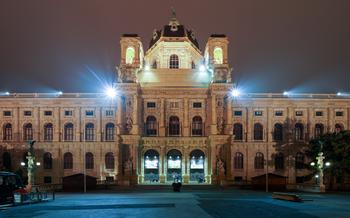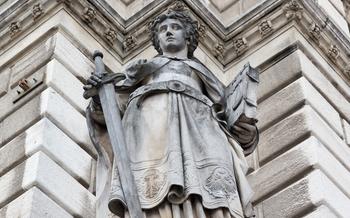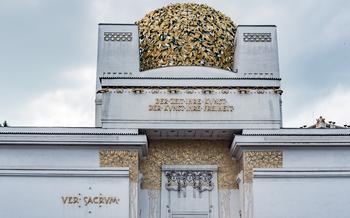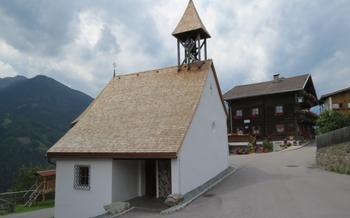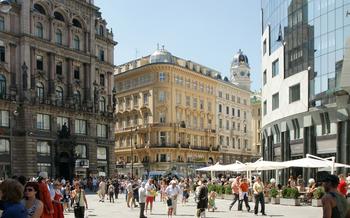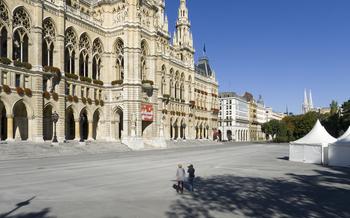
Pathological Anatomical Museum
- Historical Background
- Location and Accessibility
- Admission and Hours of Operation
- Exhibits and Displays
- Medical Education and Research
- History of Medicine in Vienna
- Unique Artifacts and Specimens
- Interactive and Educational Displays
- Ethical Considerations
- Behind-the-Scenes Tour
- Guided Tours
- Photography and Videography
- Souvenirs and Giftshop
- Accessibility for Visitors with Disabilities
- Insider Tip
Historical Background
The Pathological Anatomical Museum in Vienna, Austria, holds a significant place in the history of medical education and research. Established in 1796, it houses a vast collection of anatomical specimens, medical instruments, and pathological preparations. Initially intended as a teaching resource for medical students at the University of Vienna, the museum has since evolved into a world-renowned institution dedicated to preserving and showcasing the advancements of medical science.
The museum's origins can be traced back to the efforts of renowned physician and pathologist, Dr. Joseph von Plenck. Recognizing the need for a comprehensive collection of specimens to aid in the study of human anatomy and pathology, Dr. von Plenck played a pivotal role in establishing the museum as a central repository for medical knowledge.
Over the years, the museum's collection has grown extensively through donations from physicians, scientists, and private individuals. Today, it boasts an impressive array of specimens, including preserved organs, anatomical models, and pathological preparations that document the evolution of medical understanding and research.
The Pathological Anatomical Museum stands as a testament to the rich medical history of Vienna and its contributions to the field of medicine. It serves as a valuable resource for medical professionals, researchers, and students, providing insights into the complexities of the human body and the diseases that affect it.
Location and Accessibility
The Pathological Anatomical Museum is situated in the heart of Vienna's vibrant medical district, easily accessible by various modes of transportation. Nestled within the walls of the University of Vienna's Medical School, its exact address is Währinger Straße 13, 1090 Vienna.
For those opting for public transport, the museum is conveniently located near the Schottentor U-Bahn (subway) station, served by the U2 line. From the station, a short walk along Währinger Straße will lead you to the museum's entrance.
If you prefer to drive, limited street parking is available in the surrounding area. However, it is advisable to utilize public transportation or consider using a parking garage nearby to avoid the hassle of finding a parking spot.
Admission and Hours of Operation
Ticket Prices
- Adults: €7
- Students/Seniors: €5
- Children (6-18 years): €3
- Family Ticket (2 adults + 2 children): €16
Guided Tour Options and Fees
- Guided tours are available in English and German.
- For groups of 10 or more, guided tours can be booked in advance.
- The cost of a guided tour is €2 per person in addition to the admission fee.
Operating Hours
- Tuesday to Sunday: 10:00 AM - 5:00 PM
- Closed on Mondays, Christmas Day, and New Year's Day.
Exhibits and Displays
The Pathological Anatomical Museum houses an extensive collection of anatomical specimens, medical instruments, and educational exhibits that provide a fascinating glimpse into the history of medicine and human anatomy. The museum's collection is divided into several thematic sections, each focusing on a specific aspect of medical history or human biology.
One of the highlights of the museum is the collection of anatomical specimens, which includes preserved organs, tissues, and body parts. These specimens offer a unique opportunity to study the human body in detail and gain a deeper understanding of its intricate structures and functions. The museum also displays a variety of medical instruments, such as scalpels, forceps, and microscopes, which provide insights into the development of medical technology over the centuries.
In addition to the anatomical specimens and medical instruments, the museum features a number of interactive and educational exhibits. These exhibits allow visitors to explore the human body in a hands-on way and learn about the various diseases and conditions that can affect it. The museum also offers guided tours, which provide visitors with a deeper understanding of the exhibits and their historical significance.
Medical Education and Research
The Pathological Anatomical Museum plays a crucial role in medical education and research in Vienna. Its extensive collection of specimens serves as a valuable resource for medical students, researchers, and healthcare professionals.
The museum collaborates with medical institutions and universities in Vienna, providing specimens for teaching and research purposes. These specimens are used to illustrate various medical conditions, diseases, and anatomical variations, enhancing the understanding of human pathology.
The museum's collection also contributes to ongoing medical research. Researchers utilize the specimens to study the causes, progression, and treatment of various diseases. By examining the preserved tissues, researchers can gain insights into the mechanisms of disease and develop new diagnostic and therapeutic approaches.
The museum's educational and research activities contribute to the advancement of medical knowledge and the training of future healthcare professionals, ultimately benefiting patient care and improving public health.
History of Medicine in Vienna
Vienna has a rich and storied history in the field of medicine, serving as a hub for medical innovation and education for centuries. The Pathological Anatomical Museum is a testament to this legacy, showcasing the city's contributions to medical science and education.
Historical Context The museum's establishment in 1796 coincided with a period of significant medical advancements in Vienna. The city was home to renowned physicians and scientists, such as Joseph Skoda, Carl Rokitansky, and Theodor Billroth, who revolutionized the fields of pathology, anatomy, and surgery. These pioneers laid the foundation for the museum's collection, contributing rare and valuable specimens that continue to be studied and admired today.
Notable Figures Among the luminaries associated with the museum was Carl Rokitansky, considered one of the fathers of modern pathology. His meticulous dissections and detailed descriptions of pathological conditions provided invaluable insights into the causes and progression of diseases. Another notable figure was Theodor Billroth, a pioneering surgeon who performed the world's first successful gastrectomy. His contributions to surgical techniques and his emphasis on scientific rigor left a lasting impact on the field of medicine.
Medical Education and Research The Pathological Anatomical Museum played a crucial role in medical education and research in Vienna. The collection served as a teaching tool for medical students, providing them with firsthand exposure to a wide range of pathological conditions. Additionally, the museum facilitated groundbreaking research, enabling scientists to study the causes and mechanisms of diseases and develop new treatments.
Vienna's contributions to medical science and education continue to this day, with the Pathological Anatomical Museum standing as a testament to the city's rich medical heritage.
Unique Artifacts and Specimens
Among the plethora of fascinating specimens housed within the Pathological Anatomical Museum, several stand out for their exceptional rarity or uniqueness. One such artifact is the "Giant of Hainburg", an astonishingly preserved skeleton of a man who towered at an incredible height of 7 feet 6 inches. Discovered in a mass grave dating back to the 16th century, this colossal individual offers a glimpse into the remarkable genetic diversity of our species.
Another captivating specimen is the "Siamese Twins of Brno", conjoined twins who shared a single liver and diaphragm. Born in 1871, these remarkable sisters, Rosa and Josefa Blažek, lived for 40 years, defying all medical expectations. Their preserved bodies provide a poignant reminder of the extraordinary complexities of human biology.
The museum also boasts an impressive collection of "Mummies from the Catacombs of St. Stephen's Cathedral", shedding light on Vienna's rich history. These remarkably well-preserved remains, dating back to the 14th century, offer a glimpse into the lives and deaths of the city's past inhabitants.
These unique artifacts, along with countless others, contribute to the museum's captivating allure, showcasing the extraordinary diversity and complexity of the human body while offering a glimpse into the fascinating history of medicine and human existence.
Interactive and Educational Displays
The Pathological Anatomical Museum offers a range of interactive and educational displays to enhance visitors' understanding of human anatomy and medical history. These displays include:
- Interactive touchscreens: Visitors can use these touchscreens to access detailed information about the specimens, including their history, condition, and significance.
- Virtual reality experiences: The museum offers virtual reality experiences that allow visitors to explore the human body in 3D and get a close-up look at various organs and systems.
- Hands-on exhibits: Visitors can get hands-on with interactive exhibits that allow them to explore the human body through touch and manipulation. For example, they can touch a model of a human heart or build a model of a cell.
- Educational programs: The museum offers educational programs and workshops for visitors of all ages. These programs cover a variety of topics, such as human anatomy, medical history, and the latest advances in medical research.
- Hands-on learning: Visitors can also participate in hands-on learning activities, such as dissecting a pig's heart or examining medical specimens under a microscope. These activities provide a unique opportunity to learn about human anatomy and physiology in a practical way.
Ethical Considerations
The Pathological Anatomical Museum in Vienna, like many other medical museums, faces ethical considerations related to the display of human specimens. These specimens, once belonging to real individuals, raise questions about respect for the deceased and their families.
To address these ethical concerns, the museum adheres to strict guidelines and protocols. Informed consent is obtained from donors or their families whenever possible, ensuring that they are aware of the intended use of the specimens for educational and research purposes. Anonymity is maintained to protect the privacy and dignity of the deceased.
The museum also balances the educational value of the exhibits with sensitivity towards the emotional impact they may have on visitors. Signage and educational materials provide context and background information, while respecting the individuals whose remains are on display.
Overall, the museum strives to strike a balance between the preservation and display of medical specimens for educational purposes, while maintaining the utmost respect for the deceased and their families.
Behind-the-Scenes Tour
For those seeking a deeper understanding of the museum's operations and preservation efforts, guided behind-the-scenes tours offer an exclusive glimpse into the world beyond the public exhibits. These tours provide visitors with access to areas typically closed to the public, such as the museum's storage facilities, pathology labs, and conservation workshops.
During a behind-the-scenes tour, participants can observe the meticulous work of conservators as they preserve and restore specimens, gaining insights into the techniques and challenges involved in maintaining the museum's extensive collection. Visitors can also learn about the processes involved in preparing and cataloging new specimens, ensuring their long-term preservation and availability for research and education.
These tours offer a unique opportunity to engage with museum staff, ask questions, and gain a deeper understanding of the dedication and expertise required to maintain and manage such a valuable collection. Advance booking is recommended to secure a spot on one of these exclusive tours.
Guided Tours
Guided tours of the Pathological Anatomical Museum offer a unique and enriching experience for visitors. Led by knowledgeable and experienced guides, these tours provide in-depth insights into the museum's collection and its significance in medical history and education.
The guides are experts in their field and can provide detailed explanations of the exhibits, their historical context, and their relevance to medical science. They can also answer questions and share interesting stories and anecdotes related to the specimens and the museum's history.
By taking a guided tour, visitors can gain a deeper understanding of the museum's exhibits and their importance in the field of medicine. The guides can help visitors connect the dots between the specimens and the medical conditions they represent, as well as the advancements in medical science that have been made over the years.
Guided tours are available in different languages and can be booked in advance or on the spot, subject to availability. It is recommended to book a guided tour, especially for groups or visitors who want a more personalized experience. The cost of the guided tour is typically included in the museum's admission fee.
Photography and Videography
The Pathological Anatomical Museum has a strict policy regarding photography and videography within its premises. Visitors are generally allowed to take photographs for personal, non-commercial purposes, but flash photography and tripods are strictly prohibited. This is to ensure the preservation of the delicate specimens and to maintain a respectful atmosphere for visitors.
To capture the best shots of the exhibits, it is advisable to use a camera with a good zoom lens, as some of the specimens are displayed in glass cases or at a distance. Natural light is usually sufficient for photography, but a small flashlight can be useful for illuminating specific details.
If you wish to take photographs or videos for commercial purposes, such as publication or broadcasting, you will need to obtain prior permission from the museum administration. They will assess your request and provide guidelines regarding the terms and conditions of photography or filming.
Please be mindful of other visitors when taking photographs or videos, and avoid blocking their view or disturbing their experience. Respect the privacy of other visitors and refrain from taking photographs or videos of them without their consent.
Souvenirs and Giftshop
The Pathological Anatomical Museum offers a unique gift shop where visitors can purchase a variety of souvenirs and merchandise to commemorate their visit. The gift shop is located near the museum's exit and is stocked with a wide selection of items, including books, postcards, posters, and medical-themed gifts.
For those seeking a truly unique souvenir, the gift shop offers a range of items made from human body parts. These include keychains made from vertebrae, jewelry crafted from teeth, and even replicas of organs. While these items may not be to everyone's taste, they certainly make for a memorable and conversation-starting gift.
In addition to the more unusual items, the gift shop also offers a variety of more traditional souvenirs, such as t-shirts, mugs, and magnets. These items feature the museum's logo or images of some of the exhibits, making them a great way to show your support for this fascinating institution.
Accessibility for Visitors with Disabilities
The Pathological Anatomical Museum is committed to ensuring that all visitors have a safe and enjoyable experience, regardless of their abilities. The museum is wheelchair accessible, with ramps and elevators available to all floors. Visitors with disabilities can also request assistance from the museum staff, who are trained to provide guidance and assistance. The museum also offers a variety of educational programs and resources for visitors with disabilities, including tactile exhibits, audio guides, and sign language interpretation upon request. By making these accommodations, the Pathological Anatomical Museum strives to create an inclusive and welcoming environment for all visitors.
Insider Tip
To make the most of your visit to the Pathological Anatomical Museum, plan your trip for a weekday morning or early afternoon to avoid the crowds. This will allow you toじっくりと explore the exhibits and take your time to read the descriptions and learn about the history of medicine. After your visit to the museum, take some time to stroll through the nearby Volksgarten, a beautiful public park located just a short walk away. You can also visit the nearby Natural History Museum or the Kunsthistorisches Museum, both world-renowned museums with impressive collections of art and natural history. For a complete day out, grab a bite to eat at one of the many cafes or restaurants in the area and soak in the vibrant atmosphere of Vienna's cultural district.
